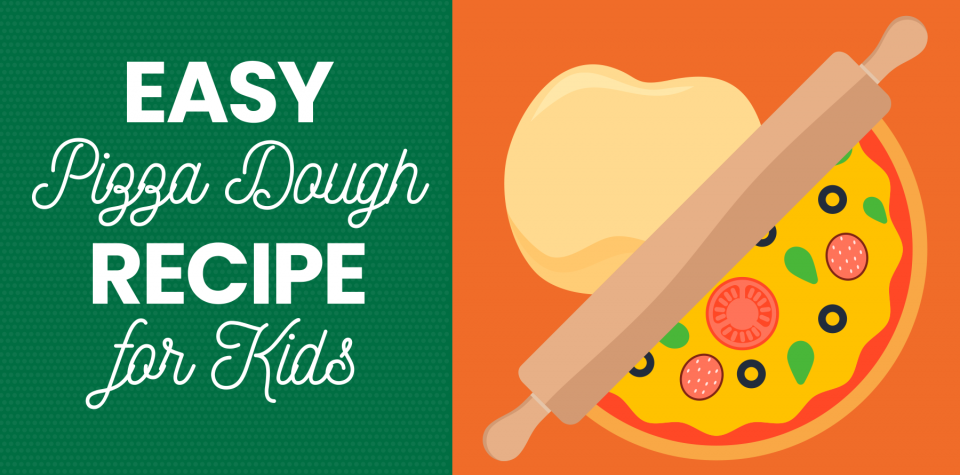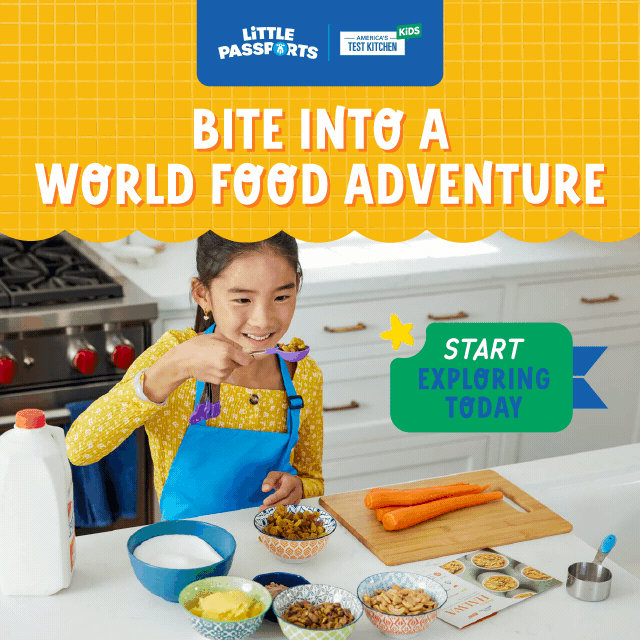
Easy Pizza Dough Recipe for Kids
Even the pickiest kids can usually find a pizza topping they love. Maybe it’s pepperoni, maybe it’s cheese, or maybe they fall for something like pineapple or buffalo chicken. The combinations are endless, and so is the joy of eating your favorites as a family!
But all those delicious toppings need a good dough to ride on, or the whole thing falls apart—literally. To make homemade pizza with your kids, try our easy pizza dough recipe, and while the dough rests, teach your kids a little about the science that makes the recipe work.

Little Passports Easy Pizza Dough for Kids
Ingredients:
3 ½ cups of flour
1 package of active dry yeast
1 teaspoon of salt
1 cup of warm water
2 tablespoons of olive oil
Recipe:
Step one: Place 1 ½ cups of the flour, the yeast, and the salt in a large mixing bowl. Older kids can do the measuring themselves. Younger kids will enjoy dumping the ingredients in after you measure them.
Step two: Add water and oil to the dry ingredients and mix to combine.
Step three: Slowly stir in the remaining flour. This part can be tricky for kids; the dough starts off easy to mix, then gets more difficult. We suggest jumping in yourself when the task becomes unmanageable for young chefs.
Step four: Pick a flat surface like the countertop or cutting board, and ask your kids to lightly flour it. This can be a ton of fun for kids. When else do they get to spread flour all over the counter?
Step five: Help your kids turn out the dough onto your floured surface.
Step six: Show your kids how to knead the dough by folding it in half, pressing the center of the dough ball down with your palm, turning the dough ball to one side, and then repeating.
Step seven: Set a timer for seven minutes and ask your kids to knead the dough. It’s quite a workout, so they’ll probably need you to step in and help partway through, but they’ll have fun trying! If the dough starts sticking to anyone, dust their hands with flour. You’ll know the dough is done when it feels smooth and elastic but is still a little sticky.
Step eight: Divide the dough into two equal-sized balls. This will give you enough dough to make two medium-sized pizzas instead of one enormous one. Make sure the dough balls have one or two inches of space between them so that they have room to spread.
Step nine: Cover the dough balls with a tea towel or plastic wrap and let them rest in a warm place. The dough will need about 20 minutes before it’s ready to roll out (be sure to flour the rolling pin), cover with toppings, and bake according to your favorite pizza recipe.
How It Works
To feed your kids a little nugget of science to go with their pizza, ask them why they think the pizza dough needs to rest on the counter for 20 minutes. Most foods they make don’t need to rest. How strange! Maybe the dough is a little dizzy after being spun around and around during the kneading?
Not quite. Part of what makes bread light and airy is a protein network called gluten created when flour is mixed with water. As gluten forms, long, springy proteins combine with round proteins covered in microscopic hooks, like burrs. The hooks grab onto the springs and the dough becomes elastic. When you stretch it out, it shrinks back into its original shape.
Kneading the dough encourages and speeds up gluten formation. Imagine making a huge ball of socks and shoes that have Velcro® straps. The more you folded and pushed on it, the more tangled the resulting sock-and-shoe ball would get!
If you use dough that’s just been kneaded, you have to fight to shape it, and it ends up tough once it’s baked. Resting the dough lets the gluten relax. Some of the hooks detach from the springs, making the dough easier to work with and, ultimately, yummier!
Mangia!

